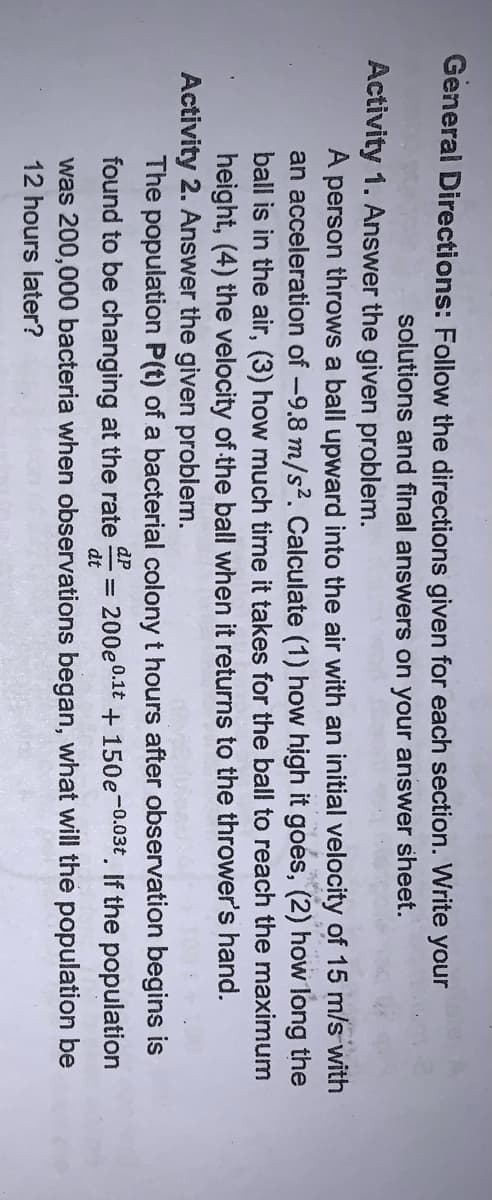General Directions: Follow the directions given for each solutions and final answers on your a Activity 1. Answer the given problem. person throws a ball upward into the air with an an acceleration of -9.8 m/s2. Calculate (1) how hi. ball is in the air, (3) how much time it takes for the A height, (4) the velocity of the ball when it returns to
General Directions: Follow the directions given for each solutions and final answers on your a Activity 1. Answer the given problem. person throws a ball upward into the air with an an acceleration of -9.8 m/s2. Calculate (1) how hi. ball is in the air, (3) how much time it takes for the A height, (4) the velocity of the ball when it returns to
Glencoe Physics: Principles and Problems, Student Edition
1st Edition
ISBN:9780078807213
Author:Paul W. Zitzewitz
Publisher:Paul W. Zitzewitz
Chapter1: A Physics Toolkit
Section1.2: Mathematics And Physics
Problem 14SSC
Related questions
Question
What is the important notation of the ff. Show complete solution.

Transcribed Image Text:General Directions: Follow the directions given for each section. Write your
solutions and final answers on your answer sheet.
Activity 1. Answer the given problem.
of 15 m/s with
A person throws a ball upward into the air with an initial velocity
an acceleration of -9.8 m/s2. Calculate (1) how high it goes, (2) how long the
ball is in the air, (3) how much time it takes for the ball to reach the maximum
height, (4) the velocity of the ball when it returns to the thrower's hand.
Activity 2. Answer the given problem.
The population P(t) of a bacterial colony t hours after observation begins is
dP
found to be changing at the rate
200e0.1t + 150e-0.03t. If the population
dt
was 200,000 bacteria when observations began, what will the population be
12 hours later?
Expert Solution
This question has been solved!
Explore an expertly crafted, step-by-step solution for a thorough understanding of key concepts.
Step by step
Solved in 4 steps with 4 images

Knowledge Booster
Learn more about
Need a deep-dive on the concept behind this application? Look no further. Learn more about this topic, physics and related others by exploring similar questions and additional content below.Recommended textbooks for you

Glencoe Physics: Principles and Problems, Student…
Physics
ISBN:
9780078807213
Author:
Paul W. Zitzewitz
Publisher:
Glencoe/McGraw-Hill

Glencoe Physics: Principles and Problems, Student…
Physics
ISBN:
9780078807213
Author:
Paul W. Zitzewitz
Publisher:
Glencoe/McGraw-Hill